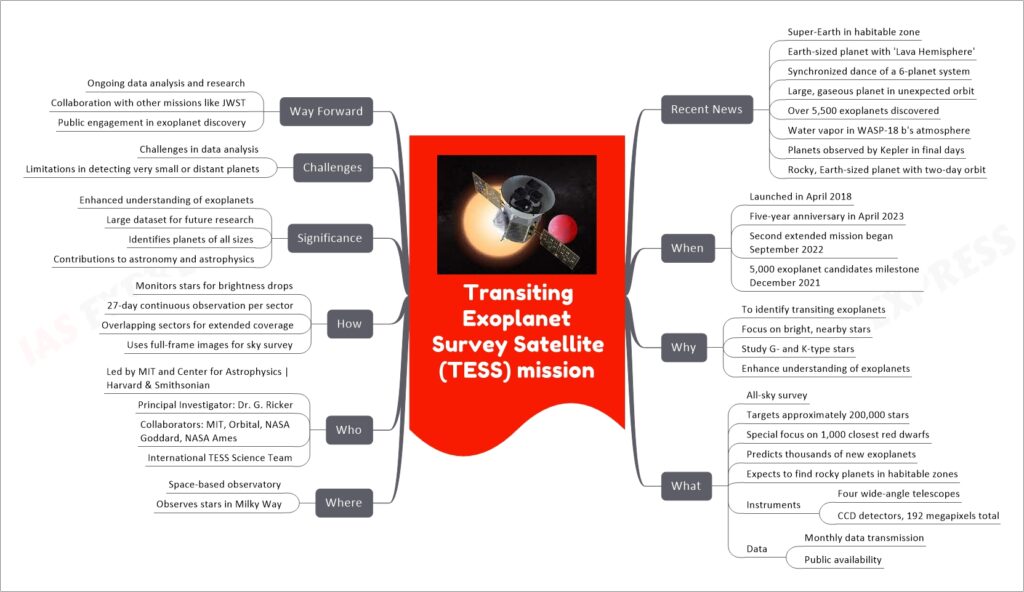Transiting Exoplanet Survey Satellite (TESS) mission

The Transiting Exoplanet Survey Satellite (TESS) mission, an initiative led by NASA in collaboration with MIT and other organizations, is focused on discovering new exoplanets. Launched in April 2018, TESS employs an all-sky survey method, targeting approximately 200,000 bright, nearby stars, including 1,000 closest red dwarfs. The mission aims to find transiting exoplanets around these stars, focusing particularly on G- and K-type stars. Using four wide-angle telescopes and CCD detectors, TESS monitors these stars for temporary drops in brightness caused by planetary transits. Over its course, TESS has made significant discoveries, including over 5,500 exoplanets, some in habitable zones, and others exhibiting unique characteristics like ‘Lava Hemispheres’. The mission has also celebrated milestones like its fifth anniversary and the commencement of its second extended mission. TESS’s contributions are vital in understanding the diversity and nature of exoplanetary systems, enhancing our knowledge of the universe.

